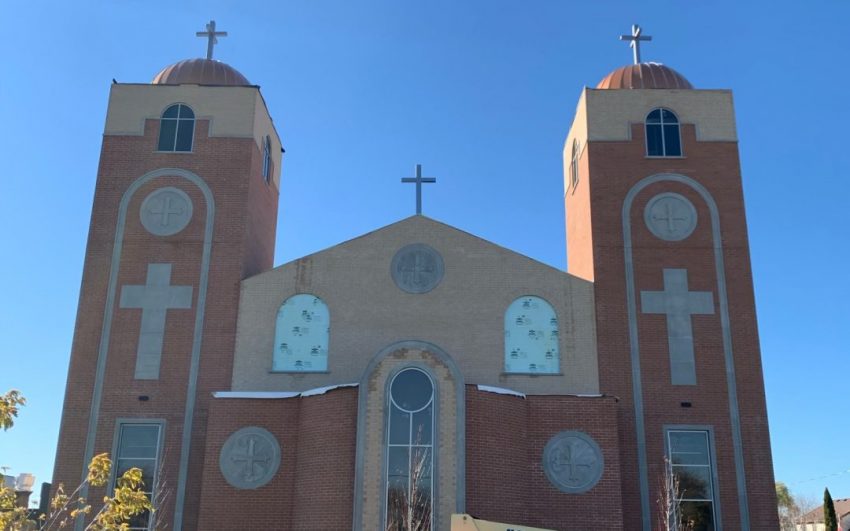Church Construction Update

“In all my paintings, light is a crucial governing aspect. I create enclosed areas mostly by use of strong concrete walls. The major reason is to create a place for the individual, a zone for oneself inside society. When the external conditions of a city’s surroundings demand the wall to be without apertures, the interior must be complete and satisfying.” –Tadao Ando.
In the small hamlet of Ibaraki, 25km outside of Osaka, Japan, stands one of Tadao Ando’s iconic architectural achievements, the Church of the Light. The Church of the Light embodies Ando’s philosophical framework between nature and architecture through how light may define and generate new spatial perceptions equally, if not more so, than his concrete buildings. Completed in 1989, the Church of the Light was a refurbishment to an existing Christian property in Ibaraki. The new church was the initial phase of a total makeover of the site – eventually completed in 1999 – under Ando’s design philosophy.
Concept
For Ando, the Church of Light is an architecture of duality – the dual nature of [co]existence – solid/void, light/dark, stark/serene. The coexisting variances leave the church bare of any decoration creating a pure, unadorned place. The junction of sunshine and solid elevates the inhabitant’s consciousness of the spiritual and secular inside themselves.
The usage of explicit materials underlines the duality of the room; the concrete construction removes any differentiation between traditional Christian symbols and aesthetics. Besides an extruded cross from the east-facing façade, the church is built of a concrete shell and a driveway entrance which was poured by a residential driveway replacement company; the concrete adds to the gloom of the church by providing a more humble, meditative place of worship. As a tribute to minimalism construction, the crosses void in the east-facing wall is the only obvious religious symbol present in the church.
Design
Formally, Ando’s Church of the Light is minimalist and reductive of religious accouterments to a single cruciform extrusion, which is often condemned as uncomfortably empty, vacant, and undefined. Although it has been reported to be nothing more than six walls and a roof, there is a whole level of design aesthetic done by Ando and his contractors that is misunderstood and unappreciated by the tenants. As a modern, minimalist tower, the Church of the Light emits an architectural purity found in the details. The reinforced concrete volume is barren of any adornment, not part of the construction process. The seams and joints of the concrete are made with precision and care by skilled Japanese carpenters, working with Ando, that have worked to create an impeccably smooth surface and properly aligned joints. So much so that the seams of the concrete formwork match perfectly with the crosses extruded on the east side of the church.
The concrete construction reinforces Ando’s fundamental focus on simplicity and minimalist aesthetic; yet, the technique in which the concrete is poured and molded provides the concrete a radiant character when exposed to natural light. Ando’s decision to site the cross on the east façade enables light to stream into the space throughout the early morning and throughout the day, which dematerializes the interior concrete walls, changing the dark volume into an illuminated box. Ando’s approach to light and concrete in the Church of the Light and his other projects has a surreal impact that perceptually converts the material into immaterial, dark into light, and light into space.
Construction and Structure
The church has an area of around 113 m², about the same size as a small dwelling. The church was planned as an add-on to the wooden chapel and minister’s home that previously existed at the site. The Church of the Light consists of three 5.9m concrete cubes (5.9m wide x 17.7m long x 5.9m high) punctured by a wall slanted at 15°, dividing the cube into the chapel and the entrance space. One indirectly enters the church by slipping between the two volumes, one that includes the Sunday school and the other that contains the service area. The benches and the floorboards are formed of re-purposed scaffolding used in the building.
It took more than two years to finish. The delay in completing the job was owing to challenges in raising the necessary cash. Initially, it was anticipated that it would cost more than the budget, and Ando even considered erecting it without a roof. Still, the construction firm donated the top, and this became unnecessary.




